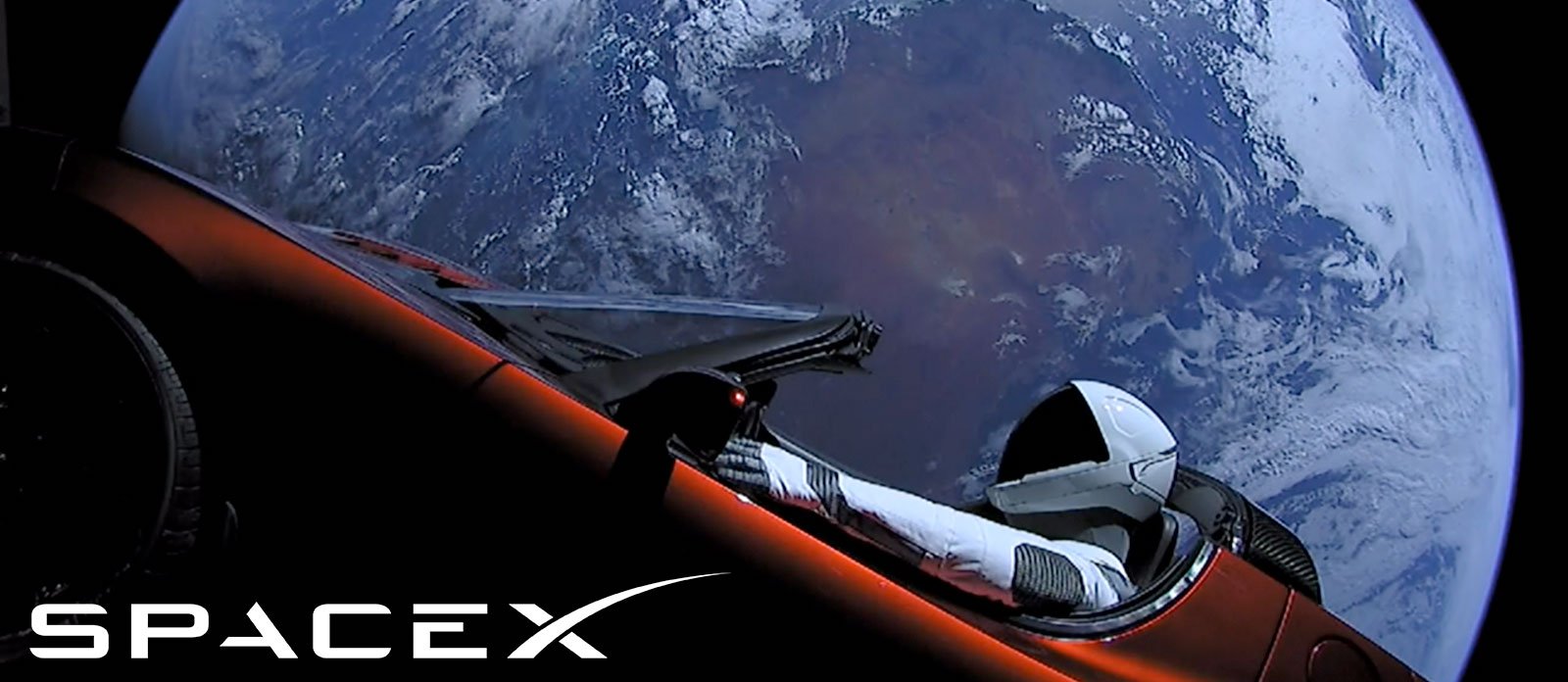Publicity stunts and viral marketing pranks – forms of outrage marketing – share a similar goal, but their executions are subtly different.
Marketing Publicity Stunts
Remember back in 2012 when Felix Baumgartner jumped out of a hot air balloon from outer space and broke the sound barrier? Yeah, that was a publicity stunt known as Red Bull Stratos, which was organized by Red Bull to promote the brand’s energy drink.
How about when SpaceX’s Falcon Heavy rocket launched Elon Musk’s roadster into space in 2018? SpaceX’s publicity stunt was orchestrated to demonstrate their new rocket could carry a payload to Mars’ orbit. As you can imagine, people were a bit outraged after hearing a billionaire launched a $100,000+ sports car into space for media coverage. Although people were initially upset by the cost and space debris, the public's outrage was muted by the spectacle and the thought of having "Starman" waiting in the sky.
Both of these publicity stunts captured the nation’s attention, earned positive media coverage, and supported the brand’s primary business objective. SpaceX and Red Bull were successful because their stunts entertained, amused, and inspired whereas outrage marketing campaigns favor bold and controversial.
Further reading: How Gillette's toxic masculinity marketing campaign caused outrage for the wrong reasons.
Marketing Pranks
If we take IHOP’s outrage marketing example, it may appear that outrage marketing is simply a marketing prank, and while IHOP’s “IHOb” campaign was technically a joke, it’s much more.
Marketing pranks are staged events, usually filmed, to capture people’s reactions and the audience's attention. Marketing pranks have viral marketing potential and are often used in commercials and social media ads.
Marketing pranks range from suspenseful, to embarrassing, to heartwarming. For example, Carlsberg’s “friendship test” prank capitalized on Schadenfreude, or their audience’s enjoyment for witnessing another person’s humiliation, when they had people call unsuspecting friends at 1:00 in the morning pleading to be bailed out of an illegal poker game. A cold beer might be the only thing keeping someone from losing it after being woken up for a gag.
The Payless “Palessi” campaign was just embarrassing. Not for Payless; they looked liked geniuses. The consumers on the other hand...ouch. See, Payless staged their shoes in a fake, high-end storefront called “Palessi” and charged customers $400 - $500 for a pair of shoes that normally retail for $50. It wasn’t a shameless money grab; Payless gave the customers their money back after the prank was over. (Now if only Payless paid DCX, the marketing agency who organized this amazing prank.)
American Greetings, a greeting card company, pranked 24 unsuspecting job applicants who were interviewing for a “Director of Operations” position over Skype for their “World’s Toughest Job” campaign. The position had a nearly impossible list of responsibilities and paid absolutely nothing. The position was actually describing the role of a mother. This heartwarming prank generated over 27 million views on YouTube and boosted sales for American Greetings Cardstore’s make-your-own card orders by 20%.
Conclusion
IHOP’s outrage marketing campaign was methodically planned and well executed. Yes, it was hard to believe, but it wasn’t downright obnoxious like the time Burger King announced the “Left-handed Whopper” on April Fools or when Arby’s announced the “Marrot” a carrot made out of Turkey
Download your complimentary Brand Manifesto Workbook today!










